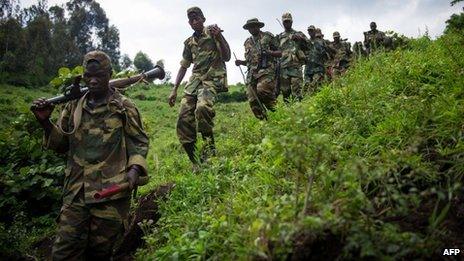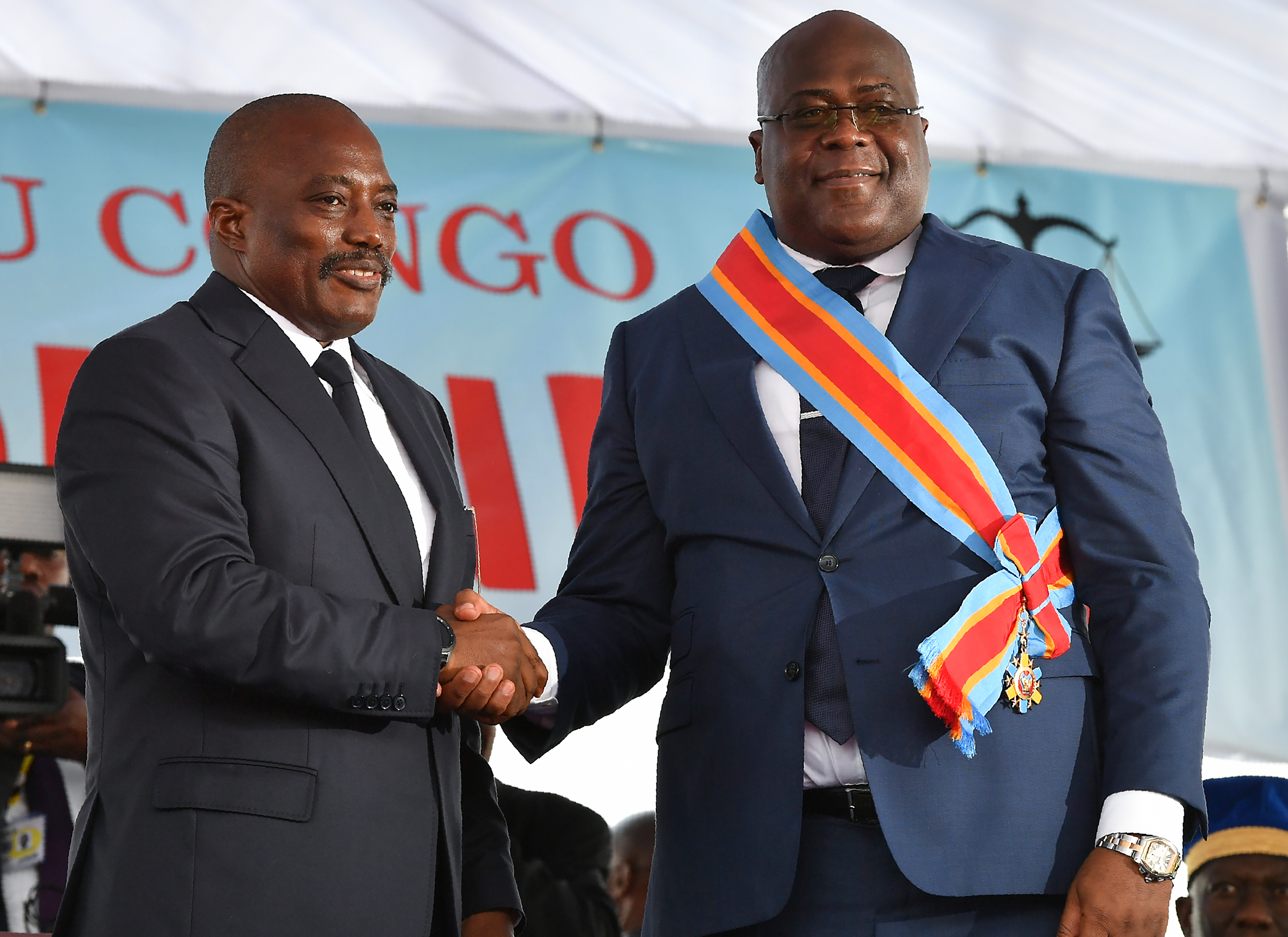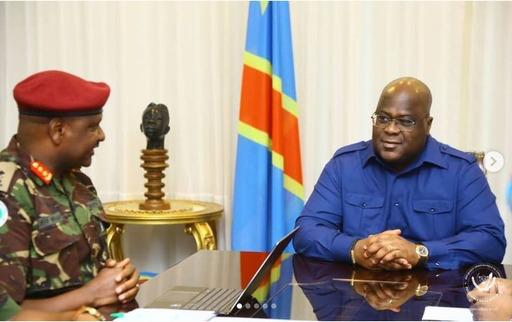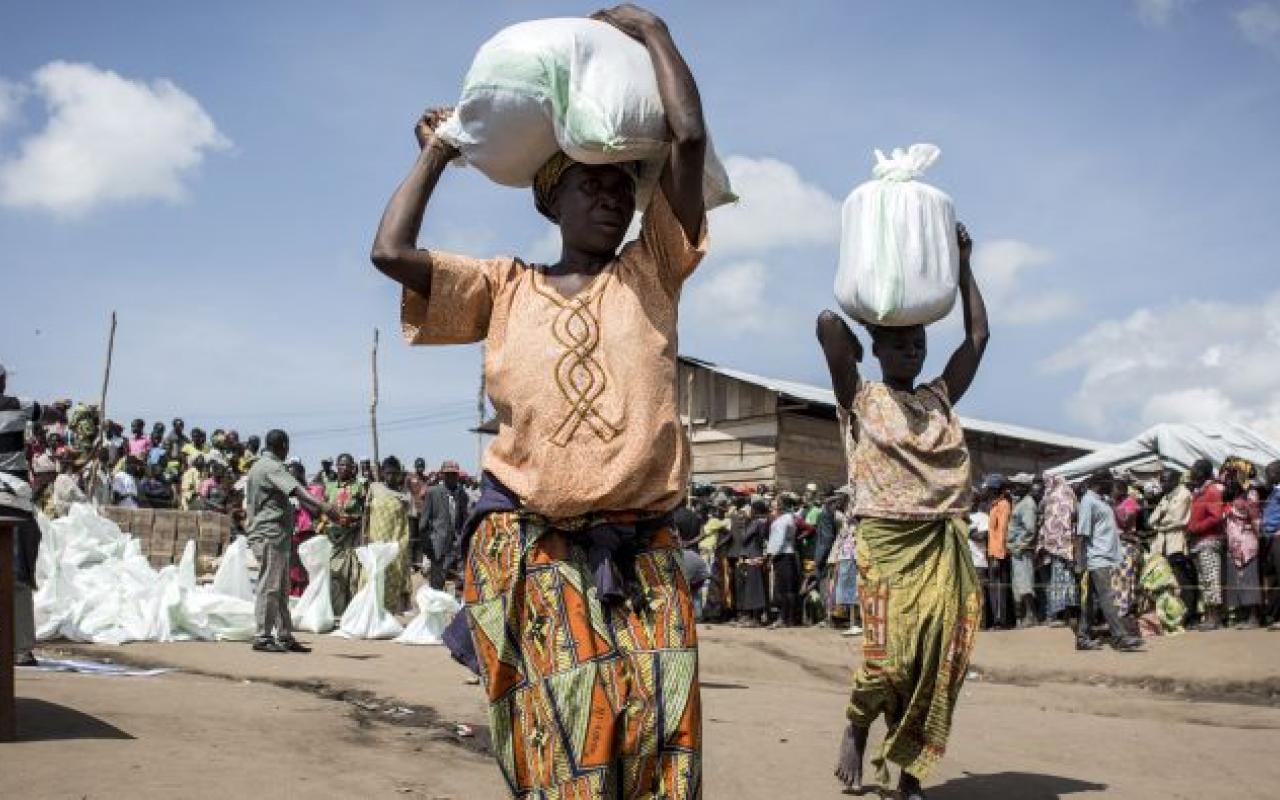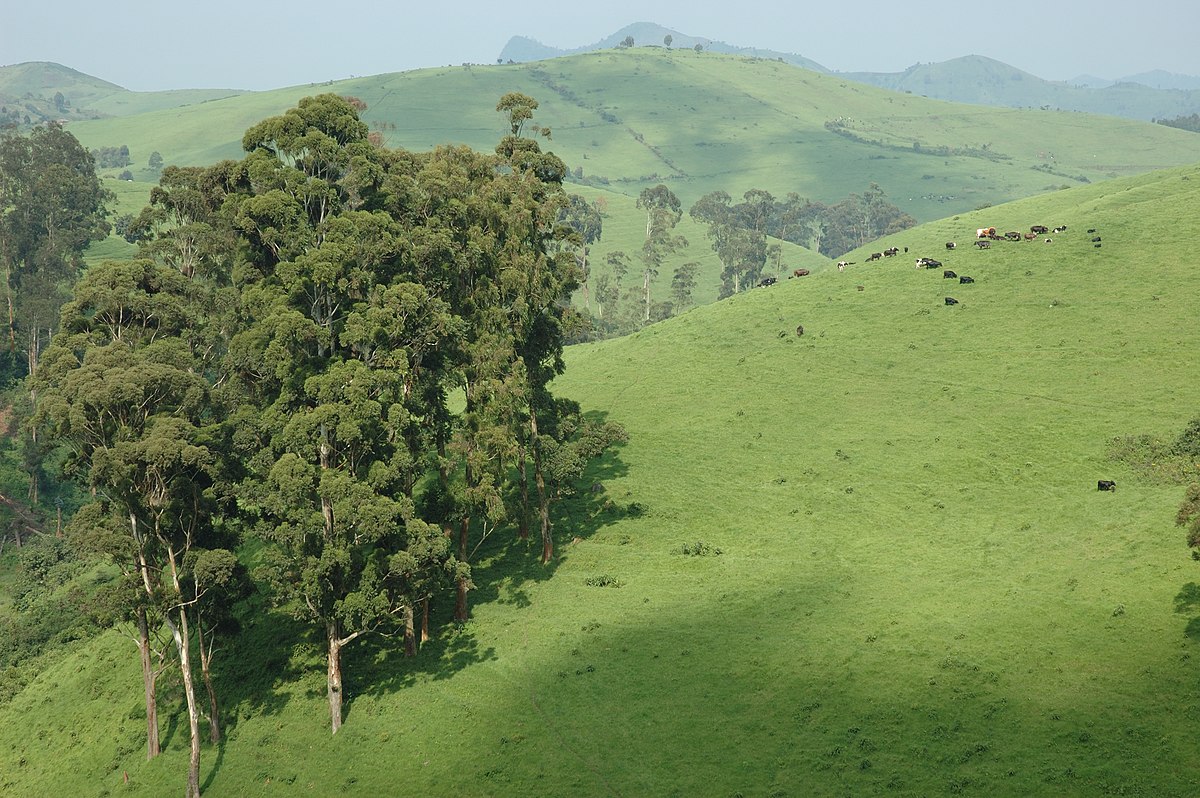Regional
Conspiracy in plain sight
DRC’s grand treachery in fighting FDLR militia
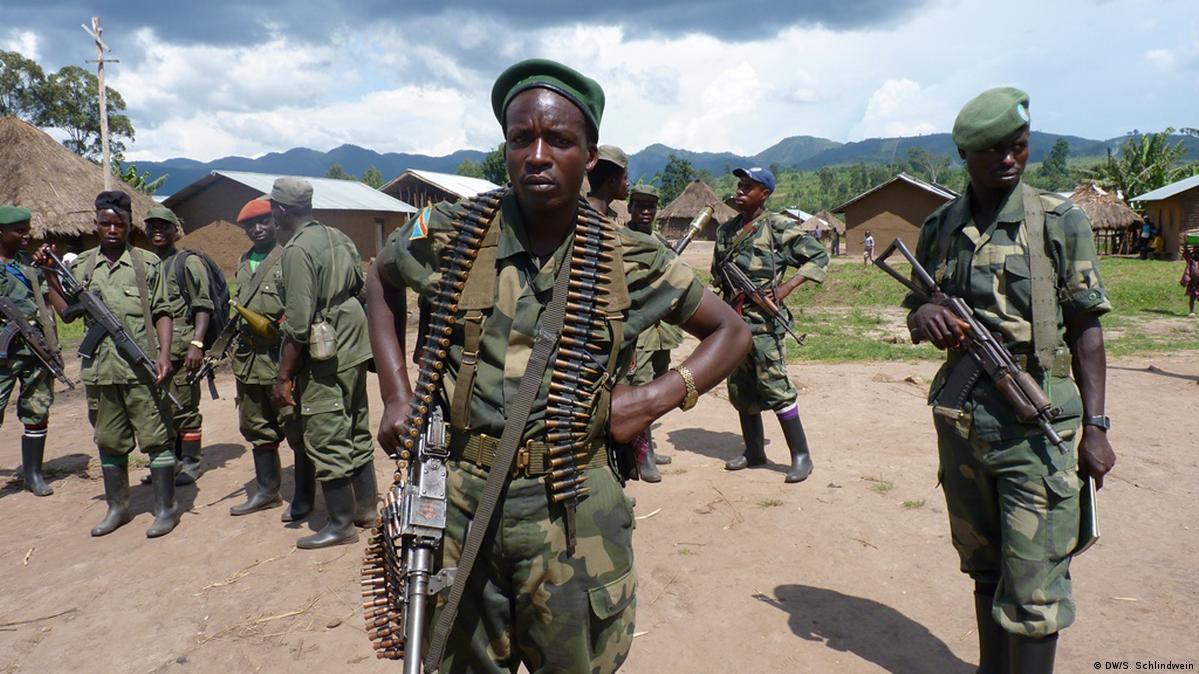
Alice Wairimu Nderitu, the UN's Special
Adviser on the Prevention of Genocide, in November 2022, reported that in
eastern DRC, the current violence is mainly the result of the refugee crisis
which led to “the flight of many individuals involved in the 1994 genocide
against the Tutsi in Rwanda to eastern DRC, forming armed groups” such as the FDLR
– a UN sanctioned genocidal force responsible for the 1994 Genocide against the
Tutsi in Rwanda – “which are still active in eastern DRC.
The Rwandan genocidal force is the cause of
the racial hate speech - reminiscent of the racist propaganda in Rwanda before
the 1994 genocide against the Tutsi - that is growing in North Kivu and South
Kivu provinces.
Earlier, in July 2022, a meeting of the Joint
Permanent Commission on Rwanda and DRC, held in Luanda, Angola’s capital,
re-emphasised the need to eradicate the FDLR and its splinter groups.
Later, in November 2022, when Heads of State
including Presidents João Lourenço, Felix Tshisekedi of DRC, and Evariste
Ndayishimiye of Burundi, met in Luanda, to consider the security
crisis in eastern DRC, they ordered the FDLR to disarm immediately and
embark on an "unconditional repatriation."
Fast forward. When East African Community
Chiefs of Defence Forces, on February 9, 2023, met in Nairobi, Kenya, to
address the peace and security challenges in eastern DRC, they agreed that FDLR
was one of the foreign armed groups that continue to instigate insecurity in
eastern DRC and across national borders.
They recommended that the EAC regional force deployed
there in November would gather necessary information on the militia group
effective March 30 to April 20 after which a report will be produced to trigger
operations against the group.
But there is a catch. Why, or how, has this genocidal
militia group survived in eastern DRC for nearly three decades despite all of
its crimes against humanity? Who protects it? How do you explain that it is
still active, 29 years after the 1994 genocide, despite the continued presence
of the UN's biggest and most expensive mission, MONUSCO?
These and many other questions, if answered,
shed good light on the dilemma of fighting or eradicating a genocidal group
that has been emboldened to wreak havoc in the region for years.
FDLR a movement, or a terrorist group?
Pressed on the available credible reports
about his government’s complicity – in supplying the genocidal group with arms
as highlighted in a Human Rights Watch report – Congolese government's Minister
of Communication, Patrick Muyaya, on February 17, told Aljazeera that: “First,
you must be clear! You cannot make any comparison between M23, which is like a
part of the Rwanda Defence Forces, and a movement like FDLR.”
A top Congolese government official calling
the genocidal militia group “a movement” is telling.
An October 2022 Human Rights Watch report
detailed how the Congolese army was supplying arms and ammunitions to the
terror group. The FARDC has used the Rwandan genocidal militia and other
militia groups in DRC to fight M23 rebels.
An FDLR fighter told HRW that he witnessed
four transfers of ammunition. “It’s the
government [troops] that would always provide us with ammunition,” he said.
“They also gave us uniforms and boots.”
The FDLR has, for years, launched incursions
into Rwandan territory with the aim of continuing the genocide against the
Tutsi. The HRW report disproves Tshisekedi’s claim that there is no longer an
FDLR force in DRC that constitutes a serious security threat to Rwanda.
“FDLR fighters have killed hundreds of
civilians over the years in eastern Congo, at times hacked them to death with
machetes or hoes, or burned them in their homes. The fighters have committed
countless rapes and other acts of sexual violence.”
It is no secret that Congolese authorities,
at the highest level, are collaborating with the FDLR. The genocidal militia is
integrated within the FARDC and that is where the problem lies. The sustained
collaboration between the Congolese army and armed groups, especially FDLR, in
eastern DRC is at the heart of the insecurity affecting the region.
Never lost sight of plan to complete
extermination of the Tutsi
In an interview with a French journalist,
just over two months ago, Bernard Maingain, a Belgian lawyer who has, for
years, condemned the anti-Tutsi hate speeches in eastern DRC, shed more light on the reasons why the M23 –
a Congolese rebel group which Kinshasa and its allies prefer to put more
emphasis on at the expense of its persecuted community – decided to take up
arms.
In the DRC, Maingain noted, the plan to
complete the extermination of the Tutsi was never lost sight of by the Rwandan genocidaires
who managed to stay in the country and mingle with the local population. It is
under the impulse of these people that the ideology is propagated while in
Europe their relays speak of human rights being flouted, he said, stressing
that the entire Great Lakes region is now "infested by this Manichean
discourse that led to the massive massacres in Rwanda in 1994."
"In the Congo, the plan to complete this
programme of extermination of the Tutsi was never lost sight of by the
genocidaires.’
It should be remembered, Maingain said, that
this discourse had been formulated and refined in Rwanda since 1959: "The
Tutsi are a predatory race, the only solution is to eliminate them, from the
child to the old man.”
When the genocidaires took refuge in DRC,
they immediately attacked the Banyamulenge and the Tutsi herders. And this has
hardly ever stopped since.
Just days before the November 2022 regional
leaders meeting in the Angolan capital, raw video footage emerged on social
media platforms indicating that the genocidal militia were actually fighting
alongside the Congolese army in its battle against the M23 rebel
group. In the video, about 10 militia men in both military uniform and civilian
attire were heard speaking Kinyarwanda and Kiswahili.
Commands were given in Kinyarwanda, a
language spoken in eastern DRC but not known to be officially used there on the
battlefield.
Amidst gunfire, two militiamen were heard
exchanging in Kiswahili on the walkie-talkie: “Mpaka Kigali;” “Mpaka! Mpaka!”
(‘Until Kigali’).
Earlier, in June 2022, a United Nations
report indicated that the FDLR controls large territories in eastern
DRC.
“FDLR remained active
in Virunga National Park, launched a new recruitment drive and
consolidated its cooperation with local armed groups,” read part of
the dated June 14, 2022.
FDLR controls 95% of charcoal trade
The DRC's Virunga National Park borders
Rwanda’s Volcanoes National Park. The Congolese park has, for long,
been used as the terrorist group’s rear base, where they hold hostages, some of
who are only released after paying ransom.
“It is impossible for anyone to operate in
the Park without at least the tacit consent of FDLR or some
of its members, as the Park is controlled by that armed group.”
The FDLR is identified as the largest illegal
foreign armed group operating in DRC and the UN’s Group of Experts has also
confirmed that the genocidal militia collaborates with the Congolese army.
Apart from Kinshasa’s protection, the
strength of FDLR comes from the fact that it is located in a natural
resource-rich area. This enables it to amass wealth by illegally exploiting and
transporting resources such as gold, timber, poaching and taxing the local
population in areas it controls.
The 2022 Pole Institute report revealed that
FDLR controls 95% of the charcoal trade in Goma and generates more than $45
million annually. This refutes the claim by Congolese leaders that the Rwandan
genocidal militia is no longer a threat to reckon with.
According to the Pole Institute, the charcoal
produced in Virunga National Park makes the largest portion of FDLR’s source of
revenues after losing mines controlled in Walikale and Masisi.
As reported, the FDLR and its business
partners – top Congolese military and political leaders – receive at least $20
million. The militia group pockets $11.6 million and $8.2 million goes to
business representatives.
Besides the extraction and trade of minerals
in Lubero, the militia group also fixed taxes on transportation of goods
transiting through its controlled areas.
The Pole Institute report noted that, for
example, a politician running for electoral campaigns or following up other
businesses can be charged up to $2,500 so that FDLR can provide safe passage
for vehicles through Virunga National Park in Kalengera, in Bwisha or Tongo in
Bwito.



